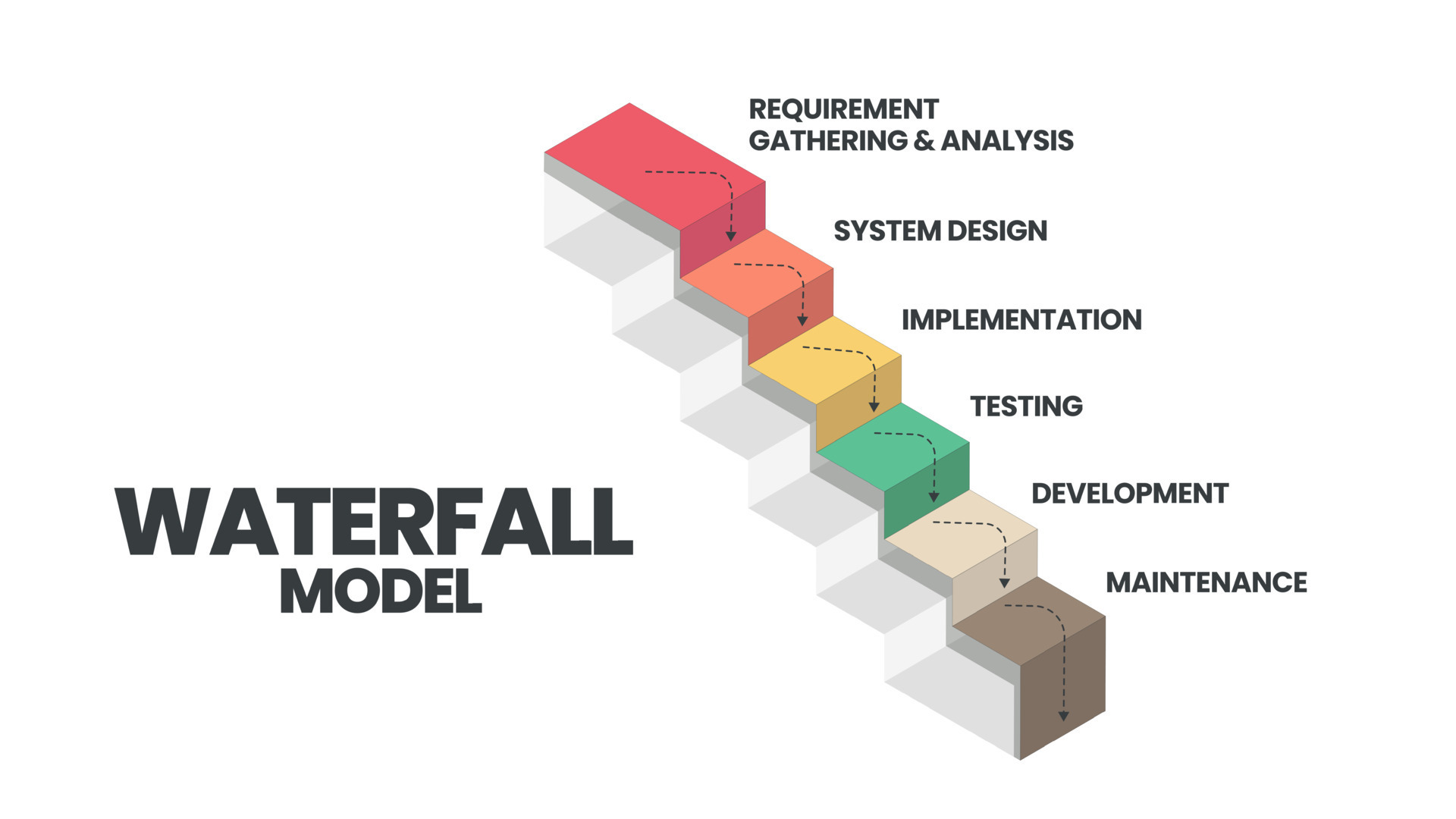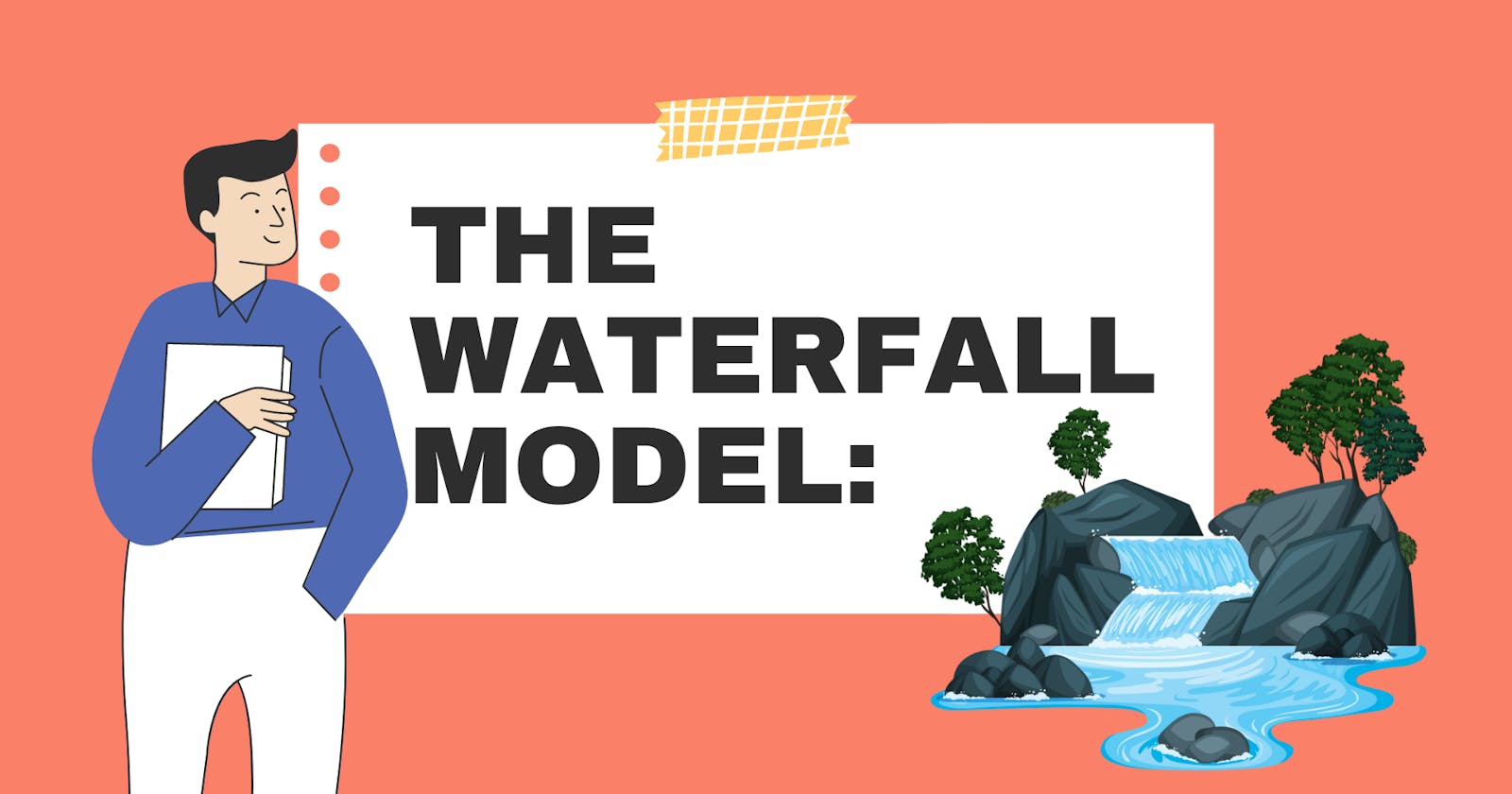The Waterfall Model: A Traditional Approach to Software Development
A beginner-friendly guide to the Waterfall model and its application in software development
Welcome to this blog, where we will be discussing the Waterfall Model in detail. The Waterfall Model is a traditional and well-established approach to software development that has been used for several decades. This model follows a linear and sequential process that consists of several phases, with each phase dependent on the completion of the previous phase. In this blog, we will explore the Waterfall Model's phases, advantages, disadvantages, and relevance in today's software development industry. So, let's dive in and explore the Waterfall Model! 🚀

What is the Waterfall Model?
The Waterfall model is a linear sequential approach to software development. It is called "Waterfall" because it is characterized by a flow in which each stage flows into the next one, much like a waterfall. The model was first introduced in the 1950s and was widely used throughout the 1970s and 1980s.
How Does the Waterfall Model Work?
The Waterfall Model is a sequential software development process that follows a linear and structured approach. It consists of several phases that need to be completed before proceeding to the next phase. Each phase has its own set of objectives, and once completed, the next phase is started. Here's how each planning phase works:
Requirement Gathering: This is the first phase in the Waterfall Model where the requirements for the software are collected and documented. This phase involves communication with the stakeholders to identify the objectives, expectations, and features of the software.
For instance, if you are building an e-commerce website, you may need to gather requirements for the product catalog, shopping cart, payment gateway, and user authentication.
Design: After gathering the requirements, the design phase begins. In this phase, the system architecture and design are planned. The design includes both high-level and low-level designs of the system.
For instance, in the case of an e-commerce website, the high-level design would include defining the different modules and the low-level design would involve deciding the layout of individual pages.
Implementation: Once the design is finalized, the implementation phase begins. In this phase, the developers start writing code for the software based on the design. This phase involves developing code for different modules and integrating them to build the final software.
Testing: After the implementation phase, the testing phase starts. In this phase, the software is tested for bugs, errors, and other issues. This phase ensures that the software is working as per the requirements and design.
For instance, in the e-commerce website example, testing would involve checking the product catalog, shopping cart, payment gateway, and user authentication functionalities.
Deployment: Once the testing phase is complete, the software is ready for deployment. In this phase, the software is released to the end user for use.
For instance, the e-commerce website would be deployed to the web server, and users would be able to access the website to browse and purchase products.
Maintenance: After deployment, the maintenance phase begins. This phase involves ensuring the smooth functioning of the software, providing support to the end users, and fixing any bugs that may arise.
The Waterfall Model is linear, and each phase depends on the completion of the previous phase. Once a phase is completed, there is no going back to the previous phase. This model is suitable for projects with well-defined requirements and where changes to the software are not expected.
Where is the Waterfall Model Used?
While the Waterfall model has fallen out of favor in recent years due to its rigidity and lack of flexibility, it is still used in certain industries where a linear approach is necessary.
For example, it is often used in the construction of physical infrastructure or for software systems where the requirements are well-understood and stable.
Advantages of the Waterfall Model
The Waterfall model provides a structured and well-defined approach to software development.
Each phase has well-defined objectives, deliverables, and review processes, making it easy to manage and control the project.
The Waterfall model is easy to understand and implement, making it ideal for small to medium-sized software development projects.
Disadvantages of the Waterfall Model
The Waterfall model is inflexible and cannot accommodate changes or modifications easily.
The testing phase is done at the end of the development process, making it challenging to fix errors and bugs.
The Waterfall model is not suitable for large and complex software development projects, where there are many uncertainties and unknowns.
Some Companies which use Waterfall Model
Boeing: The aerospace company uses the waterfall model for developing its aircraft software.
IBM: IBM is another company that has used the waterfall model for developing its software products. The company uses the model for large-scale projects that require a lot of planning and documentation.
Microsoft: Microsoft has also used the waterfall model for developing some of its products, such as the Windows operating system.
Oracle: The software giant Oracle has used the waterfall model for developing some of its products, such as the Oracle Database.
NASA: NASA has used the waterfall model for developing some of its software used in space exploration
Conclusion
In summary, the Waterfall model is a linear sequential approach to software development that was popular in the 1970s and 1980s. While it is not as commonly used today due to its rigid nature, it is still used in certain industries where a linear approach is necessary. Understanding the Waterfall model is an important part of the history and evolution of software development, and it provides a foundation for understanding more modern approaches such as Agile.
In the next blog, we will dive into the Agile model and explore how it differs from the Waterfall model and the benefits it offers in the software development process. Stay tuned!
If you found this blog informative, please show your support by dropping ❤️ and sharing it with your friends. 🙌🏼 I would also love to hear your feedback and suggestions for future topics, so feel free to drop a comment and let me know how I can improve. 🤗
